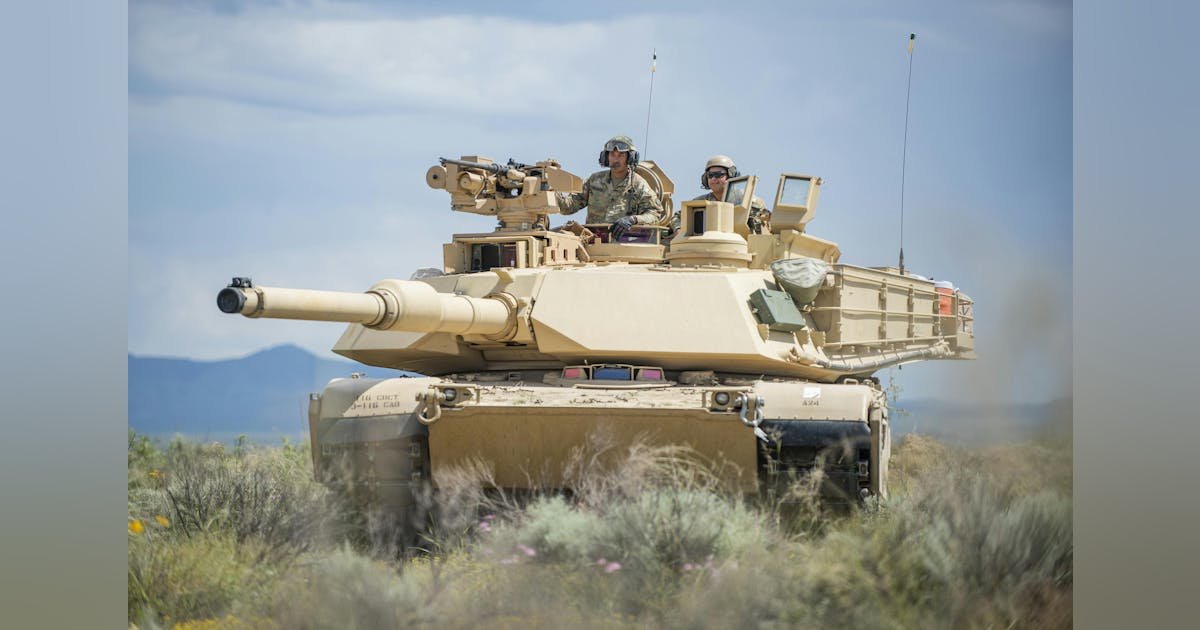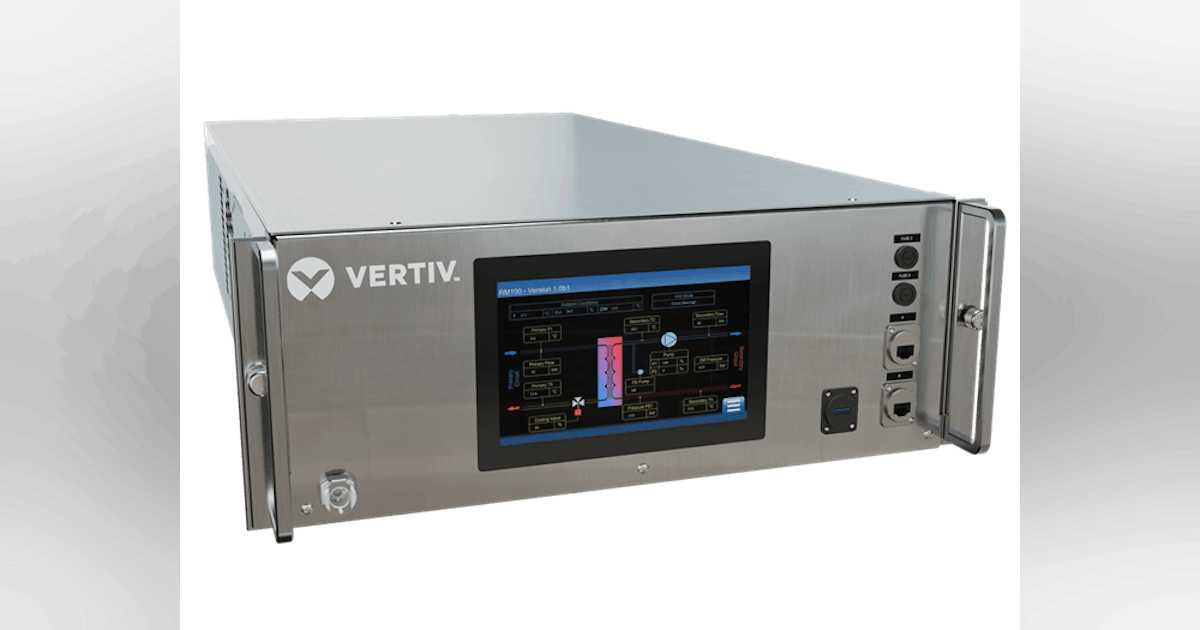Brand Stories
Main battle tank modernization using artificial intelligence (AI)

Summary points:
- Contract will advance modernization of the M1 Abrams tank, laying the groundwork for the next-generation M1E3.
- The M1E3, set to deploy in the early 2030s, will feature lighter weight, hybrid-electric propulsion, AI integration, and an unmanned turret with an autoloader.
- Key upgrades include integrated modular armor, reduced size and weight, open-systems architecture, and reduced detectability by enemy sensors.
WARREN, Mich. – Armored combat vehicle designers at General Dynamics Corp. are moving forward with a major project to modernize the M1 Abrams main battle tank, with an eye to developing enabling technologies for a redesigned Abrams tank for the 2030s and beyond called the M1E3 tank.
Officials of the Army Contracting Command in Warren, Mich., in late June announced a $150 million contract to General Dynamics Land Systems in Sterling Heights, Mich., for the Abrams Engineering Program.
This project is developing and integrating modern technologies for the Abrams tank by moving from previous separate upgrade efforts towards the next-generation M1E3 main battle tank design.
Abrams Engineering Program technologies will address space, weight, and power consumption (SWaP); improve armor protection; enhance armored vehicle survivability; and promote network integration.
Upgraded electronics
The Abrams Engineering Program since its inception has involved enhanced power generation; upgraded electronics and data processing; and improved armor and counter-improvised explosives systems. The program seeks to ensure the Abrams tank remains viable at least into the 2040s.
The M1E3 Abrams modernization program, to which much of the Abrams Engineering Program technologies will go, will modernize the M1 main battle tank fleet with a clean-sheet redesign that capitalizes on emerging technologies to deal with modern battlefield threats.
Key features of the M1E3 Abrams modernization program include lighter weight and improved mobility; integrated modular armor and survivability; modular open systems architectures; unmanned turret and autoloader; hybrid-electric propulsion; reduced thermal and electromagnetic signatures; and advanced artificial intelligence (AI) and network integration.
The M1E3 program launched in September 2023. General Dynamics Land Systems in sterling Heights, Mich. — the Abrams tank original designer — has started designing the new tank, and defining technology requirements. The new tank first should deploy in the early 2030s.
Active protection systems
The M1E3 tank will be designed to reduce overall weight compared to current Abrams models. The M1E3 will use integrated armor protection that capitalizes on next-generation composite materials and active protection systems.
The tank also will feature a modular open-systems design to help carry out technology upgrades quickly with reduced cost and complexity. The new tank is expected to include an unmanned turret with an autoloader to reduce crew size from four to three.
The M1E3 also will have hybrid-electric power to reduce fuel consumption by as much as half. The tank will make it difficult for enemy sensors and targeting systems to detect, and onboard AI will help tank crews identify and rank the battlefield’s most serious threats. Army leaders seek to align fielding the M1E3 tank with next-generation mechanized infantry vehicles.
On this Abrams Engineering Program contract General Dynamics Land Systems will do the work in Sterling Heights, Mich., and should be finished by June 2027. For more information contact the Army Contracting Command-Detroit Arsenal online at https://acc.army.mil/contractingcenters/acc-dta/, or General Dynamics Land Systems at https://www.gdls.com/.
Brand Stories
Liquid-cooling thermal management for artificial intelligence (AI)

Questions and answers:
- What are the Vertiv CoolChip CDU models for? They are designed for liquid cooling in high-performance computing (HPC) and artificial intelligence (AI) applications, including retrofit and greenfield data centers.
- What is the cooling capacity of the Vertiv CoolChip CDU 600, and what type of system is it? The Vertiv CoolChip CDU 600 provides 600 kilowatts of cooling, and is an in-row, liquid-to-liquid cooling system.
- How does the Vertiv CoolChip CDU 100 support high-density workloads? It offers 100 kilowatts of cooling in a 4U form factor with a large-surface heat exchanger, integrated controller, and built-in fluid filtration for thermal stability.
WESTERVILLE, Ohio – Vertiv Group Corp. in Westerville, Ohio, is introducing three versions of the Vertiv CoolChip Coolant Distribution Unit (CDU) for liquid cooling in high-performance computing (HPC) and artificial intelligence (AI) applications.
The the Vertiv CoolChip CDU 70, Vertiv CoolChip CDU 100, and Vertiv CoolChip CDU 600 are direct-to-chip (DTC) liquid thermal management systems.
These models are for retrofit or greenfield data center environments, with models including in-rack and row-based configurations, and liquid-to-air and liquid-to-liquid technologies. The Vertiv CoolChip CDU family is for applications ranging from retrofitting existing facilities to scaling high-density AI and HPC clusters in new builds.
_________________________
Tell me more about electronics liquid cooling
- Electronics liquid cooling uses liquids — typically water or specialized coolants — to absorb and transfer heat away from high-power electronic components. Unlike traditional air cooling, liquid cooling is more efficient at handling dense heat loads in applications like high-performance computing (HPC), data centers, and military electronics. Key methods include direct-to-chip (DTC) cooling, cold plates, and immersion cooling.
_________________________
The CoolChip CDU 70 is an in-row, liquid-to-air coolant distribution unit for liquid cooling in data centers that must use existing thermal infrastructure. The system delivers as much as 70 kilowatts of cooling capacity.
Its integrated controller supports real-time monitoring, group control and unit-to-unit communication, for coordinated thermal performance, simplified management, and efficient scaling across several different racks.
Vertiv CoolChip CDU 100 offers liquid-to-liquid in-rack cooling for high-density workloads. If offers 100 kilowatts of cooling capacity in a 4U form factor and a large-surface heat exchanger engineered for low approach temperatures. An integrated controller provides monitoring and control, and built-in filtration help maintain fluid quality and thermal stability.
Liquid-to-liquid cooling
The Vertiv CoolChip CDU 600 is an in-row liquid-to-liquid model for AI and HPC deployments. The 600-kilowatt system is for hyperscale and colocation environments, supports in-row configurations, and integrates into raised-floor or retrofit installations.
It offers a top- or bottom-piping connection and available internal manifolds, streamlines infrastructure planning, and speeds installation with redundant pumps, and advanced monitoring for temperature and fluid quality.
For more information contact Vertiv online at www.vertiv.com.
Brand Stories
California Judicial Council implements rule for generative artificial intelligence use in court

Policies must block confidential information from being input into public generative AI systems; they must also ban unlawful discrimination via AI programs. Court staff and judicial officers must also “take reasonable steps” to confirm the accuracy of material, as per a statement published by Reuters. Staff and judicial officers must also reveal whether they used AI if the final version of any publicized written, visual, or audio work was AI-generated.
Courts must implement their respective policies by September 1.
Task force chair Brad Hill told the council in a statement published by Reuters that the rule “strikes the best balance between uniformity and flexibility.” He explained that the task force steered clear of a rule that would dictate court use of the evolving technology.
Illinois, Delaware, and Arizona have also taken on generative AI rules or policies. New York, Georgia, and Connecticut are presently evaluating generative AI use in court.
California’s court system comprises five million cases, 65 courts, and around 1,800 judges. The AI task force was established to address the increasing interest in generative AI as well as public concern about its effect on the judiciary; it supervises the development of AI use policy recommendations in this branch.
Brand Stories
This Artificial Intelligence (AI) Stock Could Hit a $2 Trillion Valuation by July 31

-
Meta Platforms’ recent rally has brought its market cap close to the $2 trillion mark.
-
The digital advertising giant’s upcoming earnings report could help it hit this milestone.
-
Meta’s ability to deliver strong returns to advertisers with the help of AI tools could help it grow at a faster pace than the end market in the long run, paving the way for more upside.
Meta Platforms (NASDAQ: META) stock has been rallying impressively of late, gaining more than 32% in the past three months amid the broader rally in technology stocks. As a result, Meta’s market cap has jumped to $1.8 trillion as of this writing on July 14, making it the sixth-largest company in the world.
Meta is slated to release its second-quarter results after the market closes on July 31. The company has been able to grow at a faster pace than the digital ad market thanks to the integration of artificial intelligence (AI) tools into its offerings, which could enable it to deliver another solid set of results later this month.
Given that Meta stock is just 11% away from entering the $2 trillion market cap club as I write this, there is a good chance it could achieve that milestone in July, driven by the tech stock rally and a healthy quarterly report.
Let’s look at the reasons why Meta stock is primed for more upside this month and in the long run.
It is worth noting that Meta’s earnings have been better than consensus expectations in each of the last four quarters. One reason is the increase in spending across its family of applications by advertisers. In the first quarter, for instance, Meta reported an impressive increase of 10% year over year in the average price per ad.
Ad impressions also increased by 5% from the year-ago period, which means the company is delivering more ads. This combination of higher pricing per ad and an increase in impressions delivered enabled Meta to report a 37% year-over-year increase in its earnings to $6.43 per share in Q1. However, investors should also note that the company has been aggressively increasing its capital expenditures (capex) to bolster its AI infrastructure.
It expects to spend $68 billion on capex in 2025, at the midpoint of its guidance range. That would be a massive increase over its 2024 capex of $39 billion. This explains why analysts are expecting Meta’s earnings to increase at a slower year-over-year pace of 13% for the second quarter to $5.84 per share. While the increased investment in AI-focused data center infrastructure is undoubtedly likely to weigh on Meta’s bottom line in the short run, the higher returns its AI investments are generating on the advertising front could help it beat the market’s bottom-line expectations. And beating expectations often sends a stock up, as investors react with excitement and optimism.
-

 Mergers & Acquisitions1 week ago
Mergers & Acquisitions1 week agoHow Elon Musk’s rogue Grok chatbot became a cautionary AI tale
-

 Mergers & Acquisitions2 weeks ago
Mergers & Acquisitions2 weeks agoAmazon weighs further investment in Anthropic to deepen AI alliance
-

 Brand Stories2 weeks ago
Brand Stories2 weeks agoVoice AI Startup ElevenLabs Plans to Add Hubs Around the World
-

 Asia Travel Pulse2 weeks ago
Asia Travel Pulse2 weeks agoLooking For Adventure In Asia? Here Are 7 Epic Destinations You Need To Experience At Least Once – Zee News
-

 Mergers & Acquisitions2 weeks ago
Mergers & Acquisitions2 weeks agoUK crime agency arrests 4 people over cyber attacks on retailers
-

 AI in Travel2 weeks ago
AI in Travel2 weeks ago‘Will AI take my job?’ A trip to a Beijing fortune-telling bar to see what lies ahead | China
-

 Mergers & Acquisitions2 weeks ago
Mergers & Acquisitions2 weeks agoEU pushes ahead with AI code of practice
-

 Mergers & Acquisitions2 weeks ago
Mergers & Acquisitions2 weeks agoChatGPT — the last of the great romantics
-

 The Travel Revolution of Our Era1 month ago
The Travel Revolution of Our Era1 month agoCheQin.ai Redefines Hotel Booking with Zero-Commission Model
-

 Mergers & Acquisitions2 weeks ago
Mergers & Acquisitions2 weeks agoHumans must remain at the heart of the AI story

You must be logged in to post a comment Login